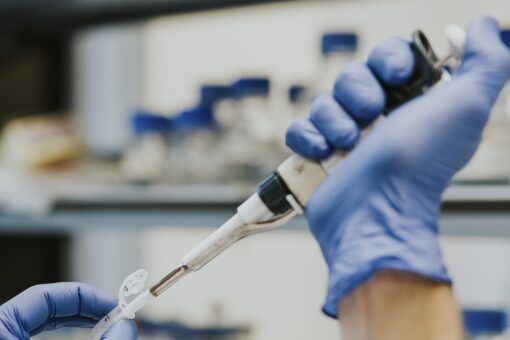
Our report recommends a phased approach to the governance of research using SCBEMs, calling for legislation to distinguish them from embryos and to provide reassurance that ethical ‘red lines’ such as transferring a SCBEM into a human or other animal, or developing SCBEMs that can feel pain, are not crossed.
SCBEM is an umbrella term for a range of structures created from stem cells which resemble or replicate aspects of an embryo. As a research tool, SCBEMs have the potential to bring public benefit through new insights around early human development and may in future have important applications that help improve IVF and pregnancy care. However, there is debate about their status – for example in relation to human embryos – and how they should be used.
We have been conducting an ethical and governance review of SCBEM research, overseen by an expert working group, since March. Today we publish our proposals for a phased approach to regulation – ‘soft’ governance in the short term, and ‘hard’ law in the medium term – that we believe will strike the right balance of encouraging innovation whilst ensuring that research respects ethical boundaries and delivers public benefits.
Our review identifies the points of greatest ethical concern in relation to the potential use of SCBEMs and makes recommendations for policy makers and others who have an influence on this field of research about what could be done to address them. These ‘red lines’ include any attempt to develop SCBEMs for reproductive use or to transfer SCBEMs to the reproductive tract of a living person or non-human animal and any potential for SCBEMs to be developed that have the capacity to feel pain or awareness.
We welcome the UK SCBEM Code of Practice – published in July – as a proportionate step to guide researchers at the present time. Though we suggest that this needs to be strengthened through inclusion of an interim upper threshold for how far SCBEMs are allowed to develop in culture, in order to reinforce the ethical red lines we have identified. Learnings from scientific development and wider public dialogue are needed in order to determine what a long-term upper threshold would look like, but the interim threshold should be tested and reviewed on an ongoing basis. The threshold should be used by the proposed SCBEM oversight committee when setting a case-by-case limit for research proposals, to ensure that models are cultured to the minimum stage required to achieve the specific research objectives.
However, relying solely on soft governance will not address all the risks posed by advancements in research. For example, the possibility of SCBEMs becoming increasingly able to replicate human embryo development could trigger a reactive response such as a decision to regulate them in the same way as embryos, which would be a poor fit, overly burdensome and ought to be avoided.
We therefore propose amendments to the Human Fertilisation and Embryology Act 1990 to expressly exclude SCBEMs from the definition of an embryo and create legal provision for a flexible and agile approach to regulation of SCBEMs called a ‘regulatory sandbox’. This is a relatively new model – effectively a test-bed – that allows innovation in a controlled environment, under the supervision of regulators. The regulatory sandbox would be used to test which SCBEMs should be regulated on what basis, and would give researchers access to regulatory expertise and a degree of oversight, whilst the science develops.
We also call for a statutory ban on the transfer of SCBEMs into the reproductive tract of human or non-human animals. As having legal penalties attached to developing SCBEMs for human reproductive use would help to reinforce this ethical red line should research advance to a point where implantation would be considered feasible.
Taken together, our recommendations represent a governance framework in which:
- These there is clarity as to the legal status of SCBEMs
- Ethical red lines are reinforced, guarding against adverse outcomes of research
- Regulatory structures are created with sufficient flexibility to respond appropriately to development in research using SCBEMs.
We welcome the UK Code of Practice as a proportionate response to governing stem cell-based embryo model (SCBEM) research at the present time and we call on funders, researchers and regulators to support its implementation and oversight.
However, as SCBEM research advances and the models become increasingly sophisticated in mimicking aspects of embryonic development, the working group was clear that additional measures are required. They should seek to give confidence to the public that ethical red lines will not be crossed, whilst also providing reassurance to the research community as to the legal status of SCBEMs so that ethical research that has potential to benefit the public is supported. We are calling for legislative action to help provide those reassurances.”
Professor Emma Cave, Chair of the NCOB Working Group on SCBEMs and Professor of Healthcare Law, University of Durham
There is considerable public stake in research using SCBEMs. We know that applications which are perceived to push ethical boundaries could impact negatively on the overall acceptability of this field of research. Alongside our proposals to strengthen the regulation of SCBEMs incrementally, we strongly encourage wider debate around the benefits, risks and costs and public interest in this research as the science advances. Whilst we have focussed primarily on the UK context in our review, we acknowledge the global nature of SCBEM research and hope our conclusions will be of value to the international scientific community and policy makers in other countries.”
Danielle Hamm, Director of the Nuffield Council on Bioethics
Read our report in full or download the policy briefing here.